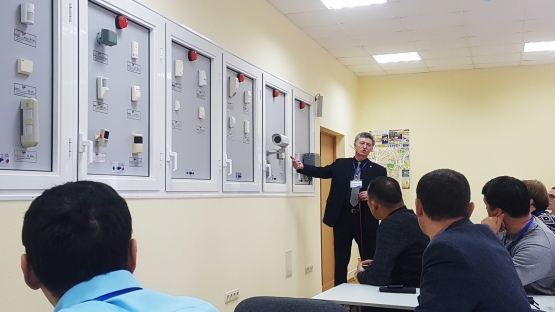A new draft guidance document that aims to increase the security of radioactive material including, for the first time, specific provisions for the use and storage of radioactive waste and mobile sources formed the basis of a new training programme that debuted last month. Feedback and lessons from the pilot course will be used for the finalization of the standard training material based on IAEA Nuclear Security Series Implementing Guide No. 11, which advises national authorities on the security of radioactive material other than nuclear material such as uranium, plutonium and irradiated fuel. The content of the guide itself has been approved and is expected to be published in the first quarter of 2019.
Specific treatment of mobile sources in the guidance is a major step forward, said Marina Labyntseva, Deputy Director for International Affairs at Rosatom’s Global Nuclear Safety and Security Institute, and one of the trainers at the course held from 17 to 21 December for regulatory professionals from seven countries in Eastern Europe and Central Asia. “Mobile sources such as industrial radiographers, used to check the integrity of oil pipes, are on the move all the time. This makes them an easier target for theft than stationary sources, such as those used in a radiotherapy machine,” she said.
While less radioactive than many sources used in hospitals, mobile sources can still be used in malicious acts. There are tens of thousands of such sources used around the world.
The new training course now includes modules dealing with specific security considerations applicable to mobile sources, such as increased level of physical protection that would not typically apply based solely on the activity of the sources. “The material of the course provides for highly interactive training, using exercises embedded into the lecture material,” said Labyntseva, who was a key expert in the revision of the training material.
The guidance also covers the security of radioactive waste from decommissioning activities of power plants and research reactors other than fuel and other nuclear material. This is an important area in Eastern Europe and Central Asia with many facilities nearing the end of their lifetime.
Also new in the training material, is a module dedicated to protection from insider threats: security breaches involving someone with legitimate access to the material, who can take advantage of his or her access right to bypass physical protection measures. These include employees of industrial irradiation facilities and radiotherapy departments of hospitals, for instance.
“Preventing insiders from taking radioactive material is important for both safety and security, and the new training course helps national authorities address it better,” said Alessia Rodriguez y Baena, the IAEA nuclear security team leader in charge of the development of the training material.




